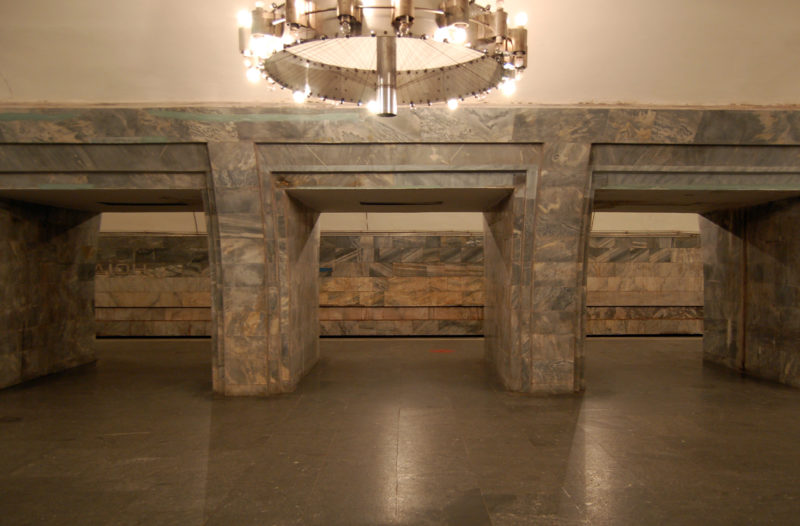
CGJ8+VF Kyiv, Ukraine Copy to clipboard
50.432222, 30.516152 Copy to clipboard
Before you go
Nearby attractions: Explore the NSC Olimpiyskiy Stadium, Kyiv Planetarium, the Volodymyrskiy Market, and the nearby Olimpijsky shopping mall, which features a variety of stores, cafes, and even a pool with fish.
Photography: Photography is generally permitted, but avoid using professional equipment like DSLRs to prevent misunderstandings with authorities.
Safety: The area is generally safe, with many public venues nearby. Stay aware of your surroundings and follow local guidelines.
Best visit time
Olimpijska Station is busiest during rush hours (7:30–9:30 AM and 5:00–7:00 PM).
To explore nearby attractions or take photos, visit during mid-morning or early afternoon for a more relaxed experience.
The station and its surroundings are particularly lively on event days at the stadium.
Directions
By car
Drive towards Kyiv city center and follow signs to the NSC Olimpiyskiy Stadium. Parking is limited near the station but available at nearby malls and office centers.
By public transport
Take the Kyiv Metro Line 2 (Blue Line) directly to Olimpijska Station. The station is well-marked and centrally located, with exits to adjacent streets and shopping areas.
Parking
Parking is available in nearby office centers and the Olimpijsky shopping mall. Arrive early to secure a spot during busy hours.
Introduction
The Olimpiiska Station, located in Kyiv 1, Ukraine 2, stands in the same spot as the former Ploshchad Lev Tolstoy station and serves as a prime example for Soviet-era art 3. This period was marked by strict censorship and ideological control, with art expected to align with state interests and promote communist ideology.
It is a part of the third section of the Kurenevsko-Krasnoarmeyskaya line and was launched just 12 months after the commissioning of the second section. Most of the stations that were built on the Obolon radius bore typically the same design, but this was not the case with Olimpiiska.

The history
The approval for the construction of the first stage of the railway line that ran from Orekhovatskaya Ploshchad station to Kontraktovaya Ploshchad station was granted in November 1969. Actual work began in 1970. The second phase was scheduled for completion in 1978, but a change in plan would push the dates further out.
The opening date, December 29, 1981, is dedicated to the anniversary of Leonid Brezhnev, who ruled the Soviet Union as General Secretary of the governing Communist 4 Party for 18 years, second only to Joseph Stalin’s in duration.
From completion to around 2011, the Olimpiiska was known as the “Republican Stadium” as a result of influence from the nearby stadium. The name of the stadium after 1996 was officially known as “Olympic.”

Subsequent renovations have been done severally on the stadium to bring it up to international standards; the first one happened between 1997 and 1999. In the renovation work leading up to the UEFA EURO 2012, the capacity of the stadium was significantly reduced 56.
The need to construct a stadium of this magnitude in Kyiv stems from the wave of massive sports development witnessed around football in the 20th century. With every project to upgrade the stadium, the solution comprises a series of artwork and alteration of design features to enhance both appeal and functionality.

The station is in a rather dire state. For many years, constant exposure to moisture and groundwater salts have ruined the precious marble.










